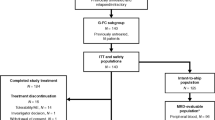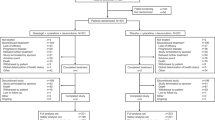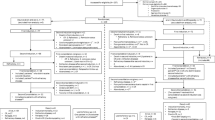Abstract
Cytosine arabinoside (AraC) is rapidly inactivated via systemic deamination with half-lives ranging from 1 h (i.v.) to 4 h (s.c.) – and cannot be applied orally due to its hydrophilic properties. These limitations might be overcome by YNK01 – a lipophilic prodrug of AraC – that is resistant to deoxycytidine deaminase and can be applied orally. In the present study the therapeutic activity, side-effects and pharmacokinetics of YNK01 were evaluated in a phase I/II study including patients with relapsed or refractory acute myeloid leukemia (AML) (n = 23) or low-grade non-Hodgkin’s lymphoma (NHL) (n = 20). YNK01 was given by 14 day cycles with escalating doses starting with a daily dose of 50 mg/m2 (equivalent to 20 mg/m2 AraC on a molar basis). The maximum tolerated dose was reached at the 600 mg/m2 dose level with WHO grade 3–4 diarrhoea as the main toxicity. In the 23 patients with AML two complete remissions, four partial remissions and three patients with stable disease were observed. In the 23 patients with AML two complete remissions, four partial remissions and three patients with NHL two cases reached partial remission and six other patients mainained stable disease. Pharmacokinetic evaluations were performed during 34 treatment cycles in 28 patients. The data suggest that YNK01 was absorbed in the distal part of the small intestine and taken up into hepatocytes. After hepatic ϕ and subsequent β-oxydation of YNK01 the released AraC (and its deamination product AraU) appeared in the systemic circulation. Time of maximum concentration (h), half-life (h) and area under the curve (ng·h/ml, at the 1200 mg dose level) were as follows (VC variation coefficient) YNK01: 1.0 (0.58), 10.1 (0.43), 12622 (0.65); AraC: 23.2 (0.57), 22.6 (0.36), 3496 (0.76); AraU: 19.2 (0.58) 22.3 (0.33) 15441 (0.66). Of the total dose of YNK01 15.8% was absorbed and metabolized to AraC and AraU, defining the metabolic bioavailability of this prodrug. A linear relationship was observed between YNK01 dose and YNK01 AUC and AraC AUC over the whole dose range tested. AraC was released from hepatocytes over a prolonged period of time resulting in long lasting plasma levels similar to a continuous i.v. infusion. After administration of YNK01 at a dosage of 100–150 mg/m2 plasma levels of AraC were comparable to those achieved after low-dose AraC treatment (20 mg/m2) while at doses of YNK01 of 450–600 mg/m2 concentrations of standard-dose AraC (100 mg/m2) were obtained. We conclude that YNK01 shows considerable activity against relapsed and refractory AML and NHL and that its pharmacokinetic properties offers advantages in comparison to (standard) i.v. or s.c. AraC in clinical practice.
This is a preview of subscription content, access via your institution
Access options
Subscribe to this journal
Receive 12 print issues and online access
$259.00 per year
only $21.58 per issue
Buy this article
- Purchase on Springer Link
- Instant access to full article PDF
Prices may be subject to local taxes which are calculated during checkout
Similar content being viewed by others
Author information
Authors and Affiliations
Rights and permissions
About this article
Cite this article
Braess, J., Freund, M., Hanauske, A. et al. Oral cytarabine ocfosfate in acute myeloid leukemia and non-Hodgkin’s lymphoma – phase I/II studies and pharmacokinetics. Leukemia 12, 1618–1626 (1998). https://doi.org/10.1038/sj.leu.2401152
Received:
Accepted:
Published:
Issue Date:
DOI: https://doi.org/10.1038/sj.leu.2401152
Keywords
This article is cited by
-
A phase II study of α-interferon and oral arabinosyl cytosine (YNK01) in chronic myeloid leukemia
Leukemia (2003)
-
Results of a phase II trial of a combination of oral cytarabine ocfosfate (YNK01) and interferon α-2b for the treatment of chronic myelogenous leukemia patients in chronic phase
Leukemia (2002)



